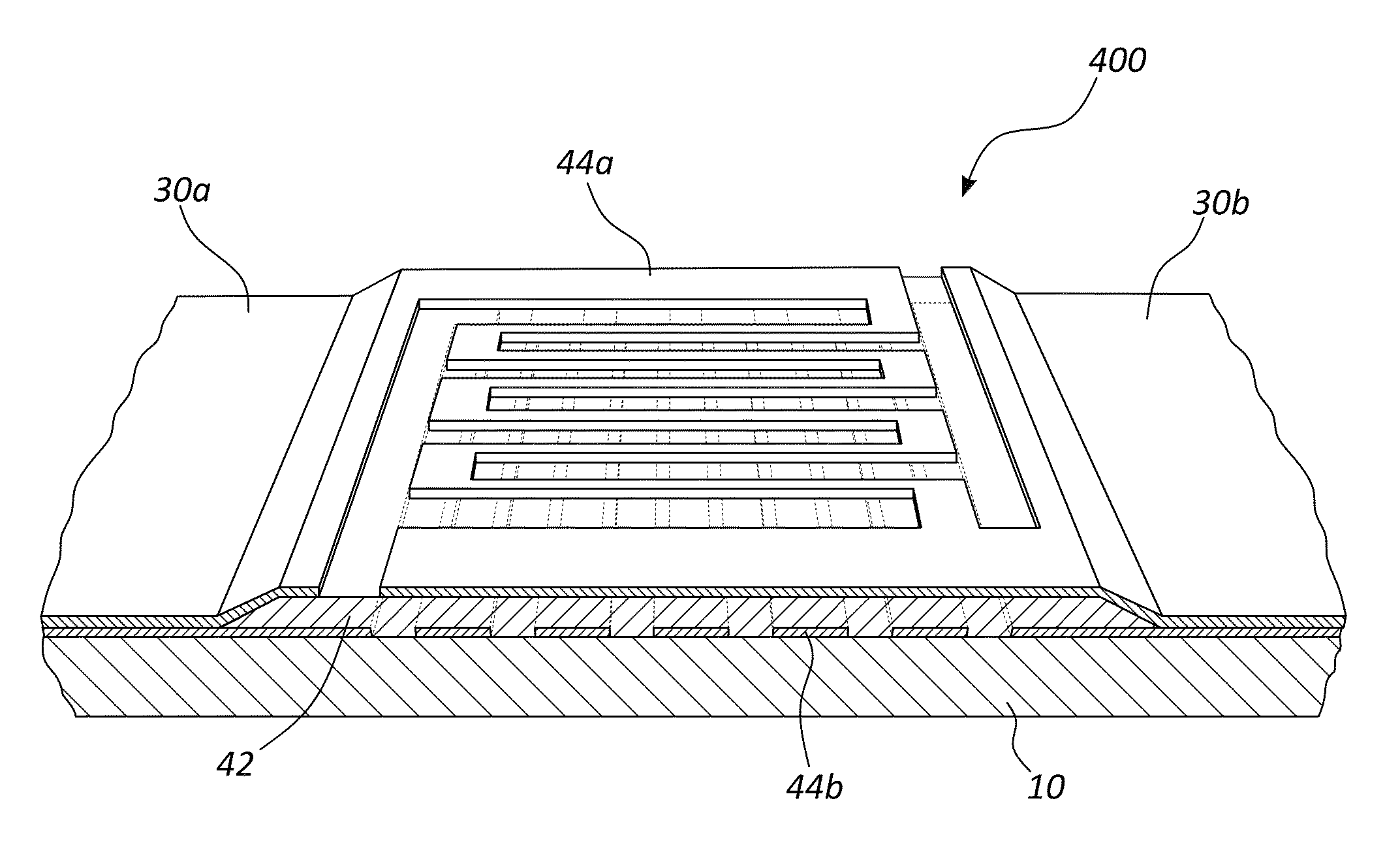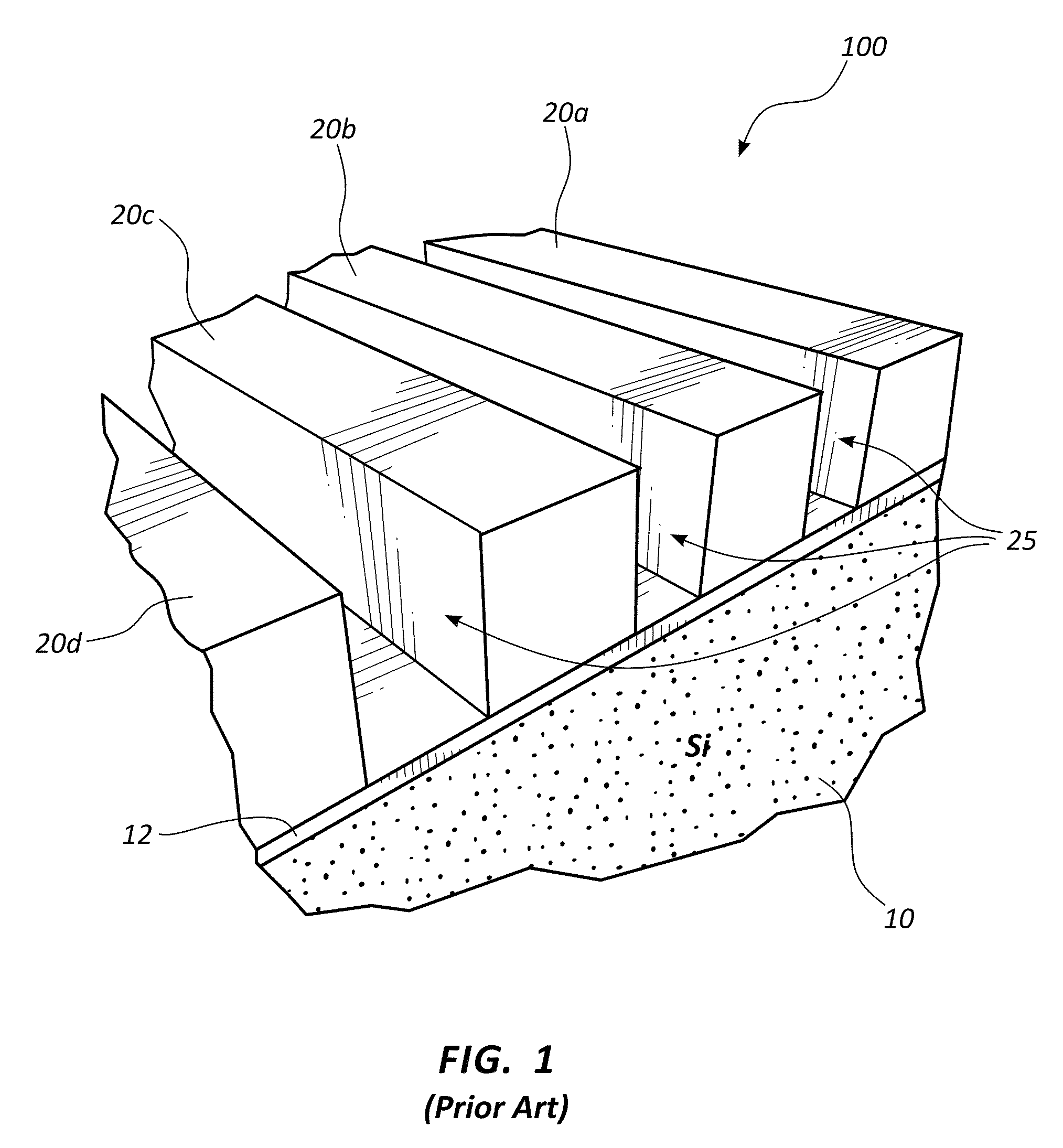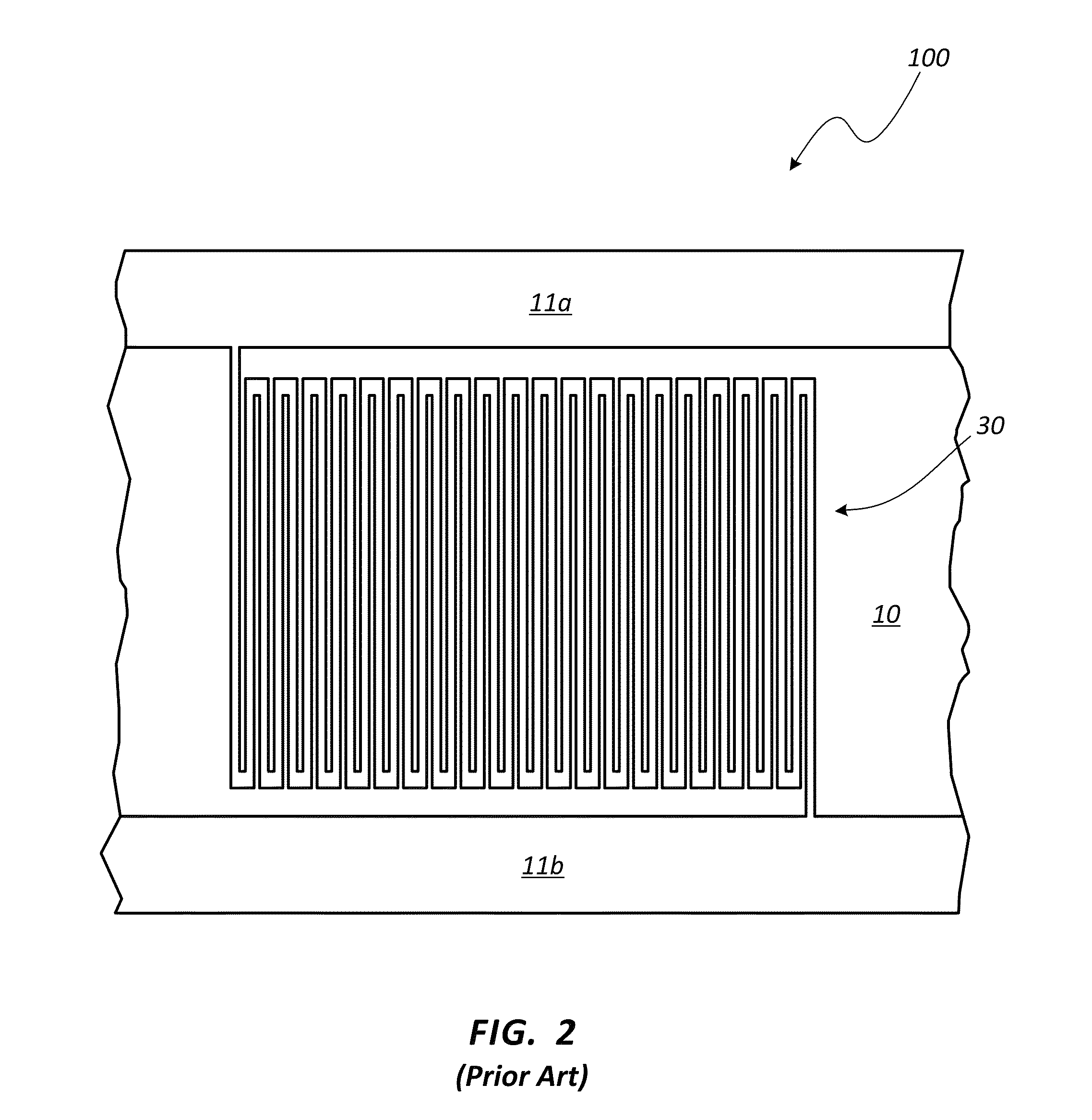Efficient polarization independent single photon detector
a single photon detector and polarization independent technology, applied in the direction of optical radiation measurement, instruments, superconductor details, etc., can solve the problems of sn-spd's quantum efficiency degrading, difficult to create nanowires, and channel features smaller than 100 nanometers, so as to achieve signal-to-noise and quantum efficiency. high
- Summary
- Abstract
- Description
- Claims
- Application Information
AI Technical Summary
Benefits of technology
Problems solved by technology
Method used
Image
Examples
Embodiment Construction
[0038]For the purpose of promoting an understanding of the present invention, references are made in the text to exemplary embodiments of a single photon detector with optimized reactive surface geometry only some of which are described herein. It should be understood that no limitations on the scope of the invention are intended by describing these exemplary embodiments. One of ordinary skill in the art will readily appreciate that alternate but functionally equivalent components may be used. The inclusion of additional elements may be deemed readily apparent and obvious to one of ordinary skill in the art. Specific elements disclosed herein are not to be interpreted as limiting, but rather as a basis for the claims and as a representative basis for teaching one of ordinary skill in the art to employ the present invention.
[0039]It should be understood that the drawings are not necessarily to scale; instead emphasis has been placed upon illustrating the principles of the invention. ...
PUM
| Property | Measurement | Unit |
|---|---|---|
| photon wavelength | aaaaa | aaaaa |
| photon wavelength | aaaaa | aaaaa |
| photon wavelength | aaaaa | aaaaa |
Abstract
Description
Claims
Application Information
 Login to View More
Login to View More - R&D
- Intellectual Property
- Life Sciences
- Materials
- Tech Scout
- Unparalleled Data Quality
- Higher Quality Content
- 60% Fewer Hallucinations
Browse by: Latest US Patents, China's latest patents, Technical Efficacy Thesaurus, Application Domain, Technology Topic, Popular Technical Reports.
© 2025 PatSnap. All rights reserved.Legal|Privacy policy|Modern Slavery Act Transparency Statement|Sitemap|About US| Contact US: help@patsnap.com



